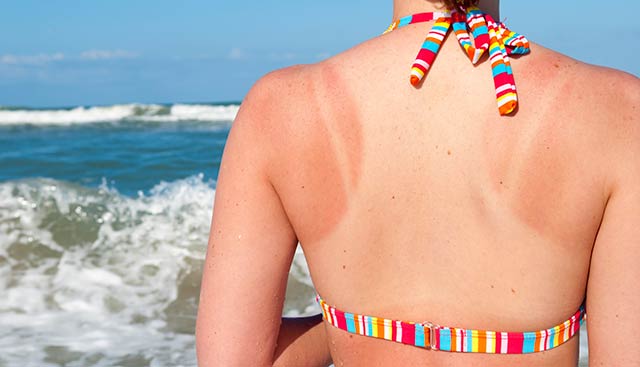
The Five Most Common Mistakes People Make When Applying Sunscreen
When used correctly, sunscreen can be very effective. In fact, if you spend time outdoors, wearing sunscreen is one of the easiest and best ways to protect your skin from exposure to the sun’s harmful ultraviolet (UV) rays.
What is the right way to apply sunscreen?
The process of applying sunscreen sounds like it should be a no-brainer, right? Not so fast. In order to achieve the maximum benefit, it must be applied properly. Consider these five common mistakes many people make when using sunscreen:
- Believing that sunscreen alone provides enough protection – Sunscreen can help protect your skin from sun damage, but it should never be relied upon as a first (or only) line of defense. For instance, even if you are wearing sunscreen, you should still seek shade whenever possible. Also, for better protection, you should cover any exposed skin with clothing, such as a wide-brimmed hat, sunglasses, long pants and a long-sleeved shirt.
- Applying an insufficient amount – All exposed skin should be coated with sunscreen, including your ears, scalp, upper back and other hard-to-reach areas. Lotion-form sunscreens tend to provide more uniform coverage than sprays. As a general rule of thumb, you should slather on a full ounce of sunscreen at least 15 minutes before heading outdoors, and then reapply that same amount every two hours, as well as after swimming or sweating.
- Using an old product – Over time, sunscreen becomes less effective. For instance, temperature fluctuations can cause a formula to change in texture and separate, making it more difficult to adequately coat your skin. Be sure to discard any sunscreen after its expiration date has passed (or, better yet, use it up beforehand) and promptly replace it.
- Only applying sunscreen when planning to spend time outside – The sun’s dangerous rays can potentially reach your skin even when you are inside a car or building (if you are near a window) and people often wind up spending significant time outdoors even if they hadn’t planned to do so. To help protect yourself from unintended sun exposure, make it a habit to apply sunscreen every single day. You might try applying facial and body moisturizers that have a sun protection factor (SPF) of at least 15 right after you shower or bathe.
- Believing that a higher SPF always provides greater protection – Some sunscreens have impressively high SPFs – 70, 85 and even 100. This can provide a false sense of security, leading some people to believe that they can safely stay out in the sun all day without reapplying their sunscreen. But, as SPF numbers increase beyond 30, the difference in the protection they provide is negligible. It is still essential to use these products correctly.
Dr. Vernon Sondak, chair of the Cutaneous Oncology Program at Moffitt Cancer Center, reminds everyone that there are simple but effective ways to help children to learn healthy sun-protection habits. One approach – known as "slip, slap, slop" – can actually be helpful to people of all ages. It involves three easy-to-remember steps: (1) Slip on some protective clothing, such as long pants and a long-sleeved shirt; (2) slap on a brimmed hat and sunglasses; (3) slop on a lot of sunscreen.
If you or a family member has been diagnosed with skin cancer, you can request an appointment at Moffitt by calling 1-888-663-3488 or completing our new patient registration form online. We do not require referrals.
